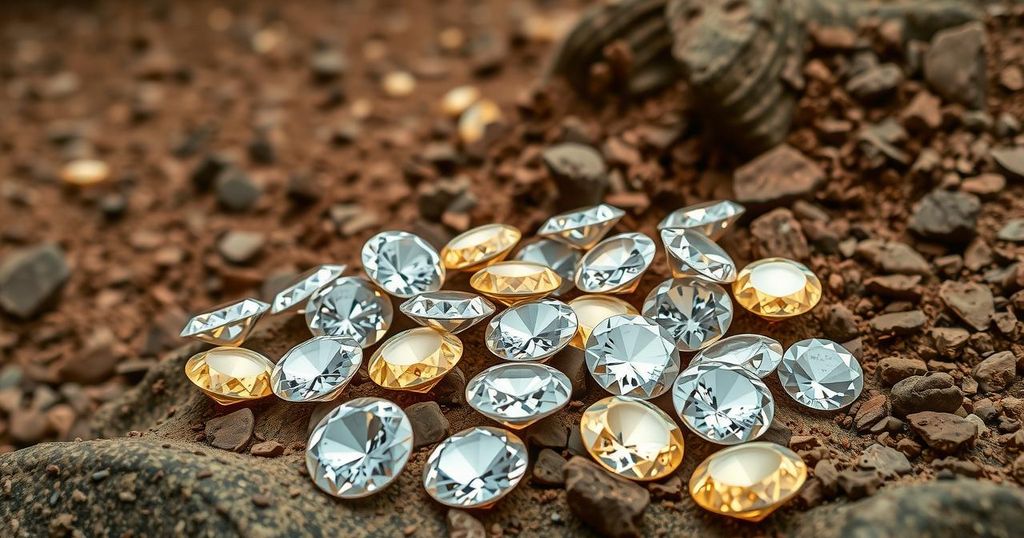Namibia possesses the richest marine diamond deposits globally, with reserves estimated at 75 million carats. De Beers, in joint operations with the Namibian government, is experiencing a strategic production reduction. The upcoming separation from Anglo American aims to enhance flexibility and value creation, while market trends indicate a growing preference for natural diamonds over lab-grown alternatives.
Namibia is home to the world’s richest marine diamond deposits, with an estimated reserve of approximately 75 million carats spread across roughly 1.0 million square kilometers of seabed. These marine deposits account for about 80% of the total diamond production and 94% of the diamond resources held by the partnership with Anglo American, which owns De Beers.
De Beers operates a joint venture with the Namibian government, known as Namdeb for land-based diamonds and Debmarine Namibia for offshore mining. In 2024, diamond production in Namibia decreased by 4%, totaling 2.2 million carats, down from 2.3 million carats in 2023. This reduction was a strategic decision to lower output at Debmarine Namibia, which experienced a 13% year-on-year decline, although it was somewhat balanced by increased mining efficiency at Namdeb.
Globally, De Beers is responsible for producing approximately one-third of rough diamonds by value, sourcing its diamonds from Botswana, Canada, Namibia, and South Africa. Notably, through its joint operation with the Government of Botswana, known as Debswana, De Beers operates the highly valuable Jwaneng mine and the sizeable Orapa mine.
Anglo American has announced plans to separate De Beers from its operations, either through divestment or demerger. This strategic move aims to enhance flexibility for both Anglo American and the Namibian government, leading to increased value for both parties. The separation aims to streamline operations and reduce overhead costs by US$100 million, aligning with De Beers’ strategy focused on four key pillars.
Market dynamics are also evolving, with anticipated demand from the United States and India expected to deplete midstream inventories, further boosted by retailer restocking. Improved macroeconomic conditions in China and growing consumer confidence in crucial markets will support this demand. Conversely, wholesale prices of lab-grown diamonds continue to decline due to excess inventories, particularly in India and China, prompting a shift in retail focus back to natural diamonds as consumer preferences and market conditions favor their sale.
In conclusion, Namibia’s extensive marine diamond reserves highlight its position as a leader in the diamond industry. The strategic actions of De Beers and its partnerships, including a focus on production efficiency and the planned separation from Anglo American, aim to maximize value for stakeholders. Additionally, the evolving market dynamics, marked by shifting consumer preferences and declining lab-grown diamond prices, underscore the resilient demand for natural diamonds.
Original Source: www.observer24.com.na




